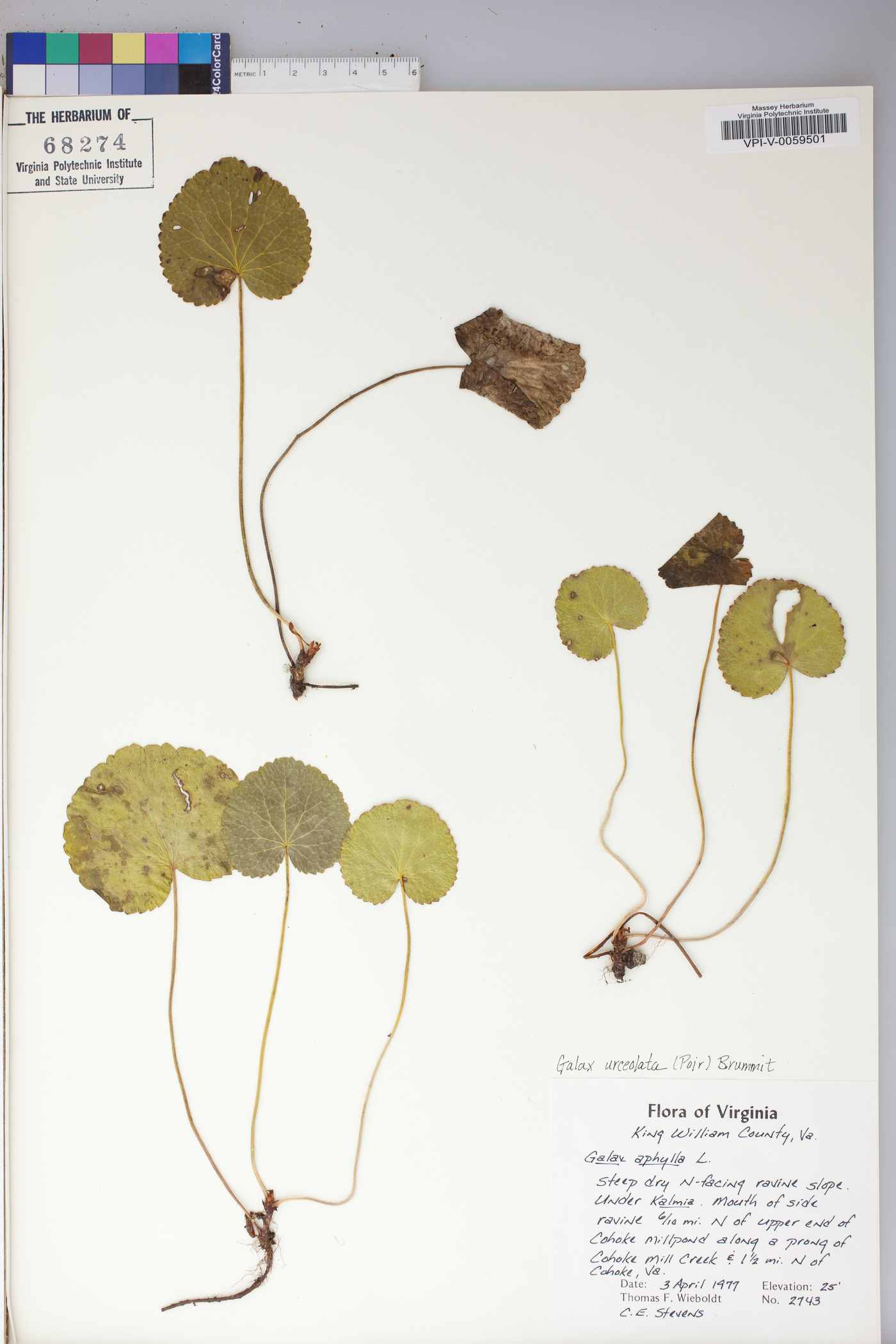
|
Family: Diapensiaceae |
Herbs, colonial, scapose, rhizomatous; rhizome slender, scale-leaved, slightly lignescent. Stems erect, unbranched. Leaves basal or rosulate at rhizome tips, 80-350 mm; petiole present; blade broadly ovate to orbiculate, margins finely dentate-serrate, apex obtuse to rounded, surfaces glabrous, subpalmately veined. Scapes ebracteate, barely elongating after flowering. Inflorescences compact racemes. Flowers: sepals barely connate proximally; petals distinct nearly to base, corolla urceolate, 3.5-8 mm, lobes white, margins entire; anthers 1-locular, without basal spurs, transversely dehiscent; filaments and staminodes connate basally, forming coronalike tube adnate to corolla base, free distally; staminodes present. x = 6. Prior to 1972, the single species of Galax was known as G. aphylla Linnaeus; the type of that name was shown by R. K. Brummitt (1972) to represent a species of Nemophila (Hydrophyllaceae). Because Galax Linnaeus 1753 was based on the Nemophila type, the later name Galax Sims has been conserved.
Sep distinct; cor cleft nearly to the base; stamens and staminodes monadelphous, the tube adnate to the cor at the base, free above, 10-lobed at the top, the lobes opposite the sep bearing anthers; anthers inflexed, with a single transversely dehiscent pollen- sac; style none; stigma broad; fr ovoid; evergreen perennial herbs with long-petioled basal lvs and erect scapes bearing a long, spike-like raceme of small white fls. Monospecific. Gleason, Henry A. & Cronquist, Arthur J. 1991. Manual of vascular plants of northeastern United States and adjacent Canada. lxxv + 910 pp. ©The New York Botanical Garden. All rights reserved. Used by permission. |
This project was made possible in part by the Institute of Museum and Library Services [MG-70-19-0057-19].
Powered by Symbiota



